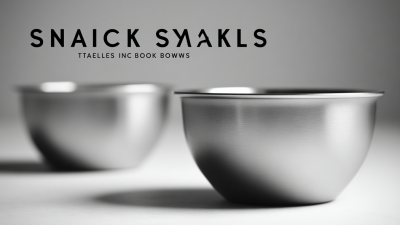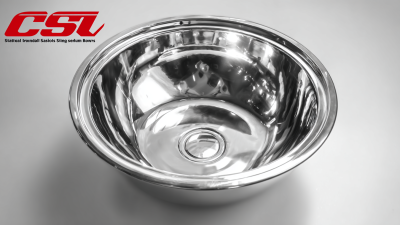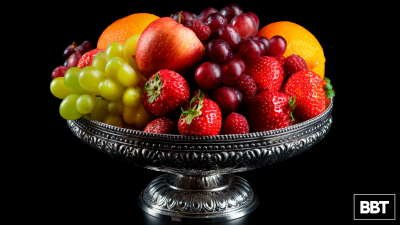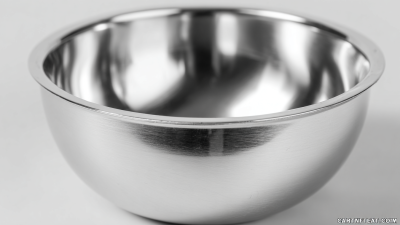In recent years, the popularity of Stainless Steel Snack Bowls has surged, reflecting a growing consumer preference for durable, stylish, and eco-friendly dining solutions. According to a Market Research Future report, the global snack bowl market is projected to reach USD 2.5 billion by 2025, driven by increasing interest in multifunctional and sustainable kitchenware.
 Stainless steel, praised for its resilience and ability to maintain temperature, is becoming a favorite among health-conscious consumers and culinary enthusiasts alike. Moreover, with a significant rise in outdoor entertaining and casual dining, these versatile bowls have emerged as essential items for various occasions, from family gatherings to picnics. As consumers seek the best solutions for serving, storing, and showcasing snacks, understanding the features and benefits of Stainless Steel Snack Bowls is crucial for making informed choices that enhance the dining experience while aligning with contemporary lifestyle values.
Stainless steel, praised for its resilience and ability to maintain temperature, is becoming a favorite among health-conscious consumers and culinary enthusiasts alike. Moreover, with a significant rise in outdoor entertaining and casual dining, these versatile bowls have emerged as essential items for various occasions, from family gatherings to picnics. As consumers seek the best solutions for serving, storing, and showcasing snacks, understanding the features and benefits of Stainless Steel Snack Bowls is crucial for making informed choices that enhance the dining experience while aligning with contemporary lifestyle values.
When selecting stainless steel snack bowls for various events, one of the primary factors to consider is the size and capacity of the bowls. For casual gatherings, medium-sized bowls are often sufficient, allowing guests to enjoy a variety of snacks without overwhelming them. However, for larger events like parties or picnics, opting for larger or multiple bowls can encourage sharing and provide ample space for a greater assortment of snacks, accommodating diverse tastes.
Another important aspect is the design and durability of the bowls. Look for bowls with a polished finish that not only enhances their aesthetic appeal but also makes them easier to clean. Additionally, consider how the bowls will be used during the event; for outdoor gatherings, lightweight yet sturdy bowls that won’t easily tip over are ideal. Lastly, examine any special features, such as non-slip bases or stackability, which can greatly enhance convenience and functionality during different occasions.
| Occasion | Size (Diameter) | Capacity | Material Thickness | Weight |
|---|---|---|---|---|
| Picnic | 8 inches | 1.5 quarts | 0.8 mm | 250 grams |
| Birthday Party | 10 inches | 2.5 quarts | 1.0 mm | 350 grams |
| Game Night | 6 inches | 1.0 quart | 0.6 mm | 200 grams |
| Outdoor BBQ | 12 inches | 3 quarts | 1.2 mm | 450 grams |
| Casual Family Dinner | 9 inches | 2 quarts | 0.9 mm | 300 grams |
Stainless steel snack bowls have become increasingly popular due to their numerous benefits over traditional materials like plastic, glass, and ceramics. One of the standout advantages is their durability. Unlike glass or ceramic, stainless steel is less prone to breakage, making it ideal for homes with children or for outdoor occasions. Additionally, stainless steel is resistant to rust and corrosion, ensuring that these bowls maintain their appearance and functionality over time.
Another significant benefit is that stainless steel is non-toxic and free from harmful chemicals often found in plastics. This makes them a safer option for storing food and snacks, particularly for young children. They are also easy to clean and usually dishwasher safe, which enhances convenience for everyday use.
Tips for choosing the right stainless steel snack bowls include considering the size and shape based on your intended use—larger bowls for sharing snacks at parties and smaller, more compact ones for personal servings. Look for bowls with a textured or insulated exterior for better grip and heat retention. Furthermore, opting for bowls with lids can be beneficial for travel or storage, keeping your snacks fresh and secure.

When selecting the ideal stainless steel snack bowls for gatherings, size and capacity play crucial roles. Different occasions call for different needs; for instance, a casual movie night with friends might require smaller bowls for individual snacks, whereas a buffet-style gathering might necessitate larger bowls to accommodate a variety of treats. Understanding the number of guests and the types of snacks being served can significantly influence the size selection. A smart approach is to have a mix of sizes to suit various snack types and serving styles, ensuring that every guest has what they need within reach.
Furthermore, the capacity of the bowl directly impacts how well it can meet your serving requirements. Larger bowls are perfect for popcorn, chips, or salads, allowing for ample servings that minimize the need for constant refills. On the other hand, smaller bowls are ideal for dips, nuts, or candies, making it easy for guests to enjoy a variety of flavors without overwhelming them with excessive portions. Ultimately, by considering the size and capacity of your stainless steel snack bowls, you can create a more enjoyable and organized gathering where guests feel welcome to indulge in their favorite snacks without the hassle.
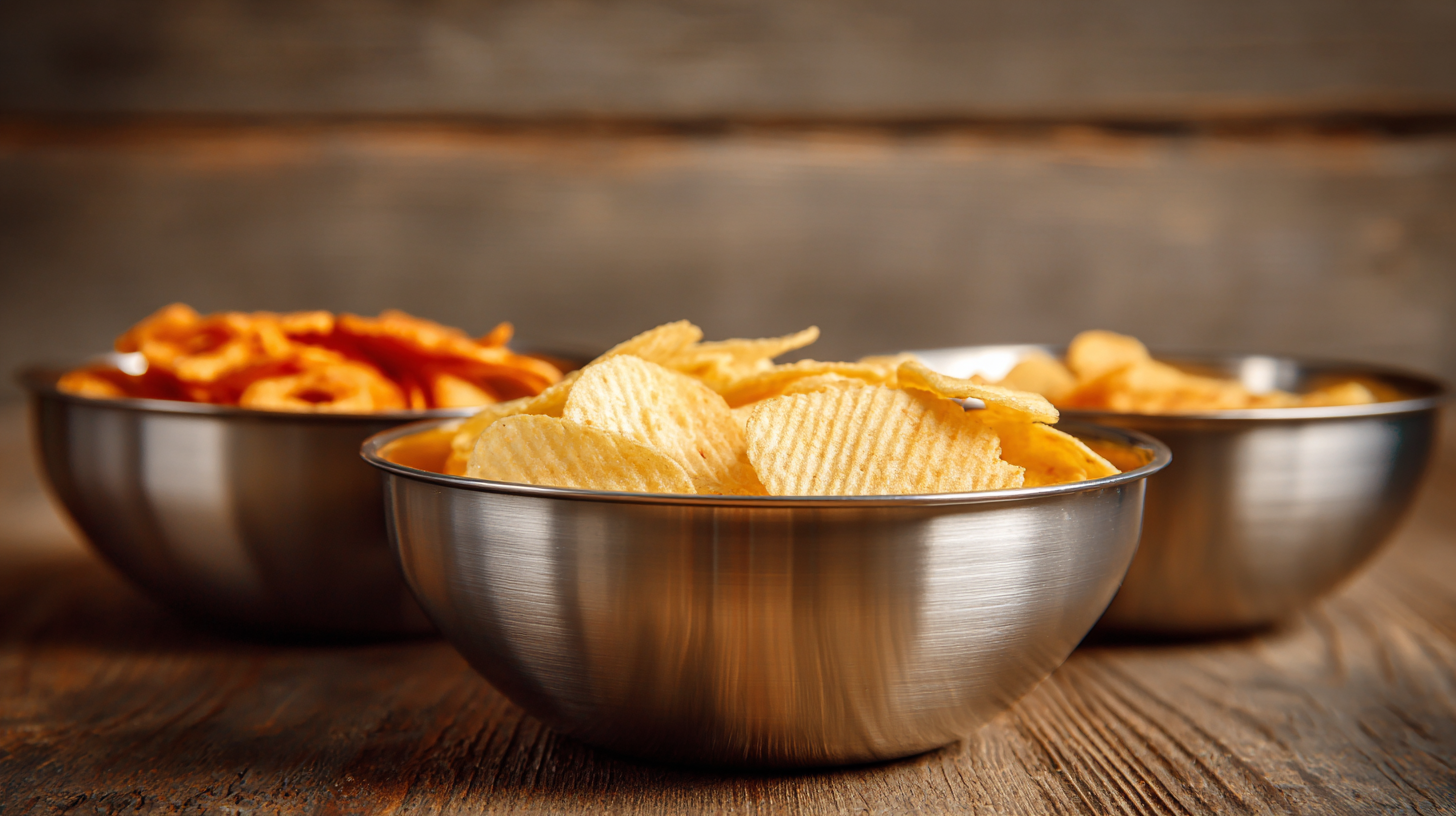
When selecting the best stainless steel snack bowls, aesthetic appeal plays a crucial role in enhancing the overall experience. Today’s consumers are increasingly drawn to designs that not only serve a functional purpose but also complement their home decor. Manufacturers are responding to this trend by offering a variety of finishes, shapes, and patterns that cater to different tastes and occasions. From sleek, minimalist styles to vibrant, artistic prints, the right choice can elevate any gathering, making the act of snacking not just practical but also visually pleasing.
Moreover, the influence of social media on dining aesthetics cannot be ignored. Platforms like Instagram and Pinterest have popularized the idea of "food styling," where the presentation of snacks is as important as the snacks themselves. Stainless steel bowls with polished surfaces reflect light beautifully, making food look more appetizing in photos and enhancing the overall dining experience. As such, when choosing snack bowls, consumers are increasingly considering how their selections will look in shared spaces and online, further intertwining everyday functionality with trendy design elements.
This chart illustrates the aesthetic appeal preferences of consumers when choosing stainless steel snack bowls for various occasions. The data reflects the percentage of consumers who prioritize design factors such as color, shape, and size.
When selecting the perfect stainless steel snack bowls, a comparative analysis of leading brands can make a significant difference. Top contenders like OXO Good Grips, Cuisinart, and RSVP International each offer unique features tailored to different needs and occasions.
OXO’s bowls are renowned for their ergonomic design and non-slip bottoms, making them ideal for gatherings. Cuisinart, on the other hand, provides a sleek, modern aesthetic perfect for upscale events, while RSVP International boasts durability and versatility, suitable for both indoor and outdoor settings.
Tips for choosing the right bowl include considering the size and capacity that best fits your snacking needs. Smaller bowls are ideal for appetizers like nuts and candies, while larger options work great for popcorn or chips. Additionally, look for features such as stackability for easy storage and dishwasher-safe materials to simplify cleanup after your event.
Another important factor to consider is the weight and stability of each bowl. Heavier bowls tend to be more stable, preventing spills during lively occasions. Checking for rounded edges can enhance safety, especially in families with young children. Ultimately, a blend of functionality and style will ensure that you select a stainless steel snack bowl that caters to all your entertaining needs.

